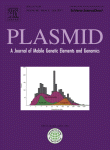

|
International Society for Plasmid Biology and other Mobile Genetic Elements |
ISPB: Brian Wilkins |
|
|
About Archive Meetings Members Noticeboard People Prizes > - Brian_Wilkins - Past_recipients - Rules Reference 
|
A profile
Brian M. Wilkins (1939-2003) was a key member of the Plasmid Biology community for many years. He used genetics to study mechanisms controlling the horizontal spread of genes in bacterial populations. His work was of great intrinsic interest as a study of complex biological phenomena, but also had broader impact in revealing mechanisms driving the spread of antibiotic-resistance in bacterial populations and events in important infectious diseases. As an undergraduate Brian read Botany at the Queen's College, Oxford, graduating in 1962. He was awarded a Christopher Welch Scholarship to support his DPhil research on genetic recombination in bacteria, under the supervision of E.A. Bevan. During his postgraduate training he attended a course in Naples on the genetics and physiology of bacterial viruses that had a lasting influence on his scientific interests and his experimental design. After a brief period at Queen Mary College, London, Brian joined the laboratory of Paul Howard-Flanders at Yale University School of Medicine, as a postdoctoral research associate. Howard-Flanders was a British-born geneticist interested in the mechanisms of replication, recombination and repair of DNA molecules. Together with Dean Rupp and others, they published several important papers on the replication and recombination of bacterial DNA that had been damaged by UV irradiation. In 1969, Brian was recruited by Bob Pritchard to join the new Department of Genetics at the University of Leicester. There he continued to work on processes related to DNA recombination, with increasing emphasis on the role of plasmid-borne genes in the transfer of DNA between bacterial cells as well as the nature of the bridge between donor and recipient bacteria that allows the movement of genetic material between the two cells. Using bacteriophage to destroy donor bacteria, the recipients being resistant, he was able to show that labelled membrane proteins from the donor were transferred to the membranes of the recipient, providing strong evidence for membrane fusion during mating. As early as 1975 he produced evidence for a genetic interaction between certain plasmid genes and host genes encoding components of the cellular DNA replication machinery. Developments of this observation in his laboratory led to the discovery of a plasmid gene encoding DNA primase, an enzyme crucially involved in the initiation of DNA replication. Using the same approach to destroying the donor Wilkins and his colleagues established that the plasmid-specified primase protein was transferred from the donor to the recipient cell during the bacterial 'mating' event, and that this could occur in the absence of DNA transfer. These important observations on plasmid-mediated protein export now make sense in light of the genetic relatedness of the cognate transport proteins and components of secretion systems associated with several clinically important bacterial pathogens, including Legionella pneumophila, the cause of Legionnaires' Disease. Brian's interest in plasmid biology and horizontal gene-transfer fuelled a continuing study of the genetic interactions between the plasmid and the recipient cell, in which the newly transferred DNA encounters a potentially antagonistic environment. He pioneered the studies that have shown that the first few plasmid genes transferred are immediately expressed in the recipient cell to produce proteins that help to protect and establish the incoming DNA in the hostile environment. Plasmid-encoded proteins block host-specific degradation ('restriction') of the incoming DNA, inhibit the potentially suicidal 'SOS' response and augment a potentially limiting host protein that is necessary for DNA replication. The relevant plasmid genes are expressed in a transient burst by a mechanism that unusually were hypothesised to involve utilisation of the single-stranded transferred DNA as the template for RNA polymerase. Brian's most recent studies, in collaboration with biochemical colleagues, involved exploration of this hypothesis that the single-stranded DNA folds into a unique secondary structure that creates a temporary template for RNA polymerase. Replication of the transferred strand in the recipient would necessarily destroy this special secondary structure and self-limit the burst of gene-expression. Brian was also a pioneer in thinking about how to use genome sequence information to tell you more about a plasmid than how many open reading frames it encodes, what their products are related to and what regulates their expression. His study of the RP4 genome sequence demonstrated that the genomic signature of this plasmid, a marked deficiency in targets for certain groups of restriction enzymes, must be the result of selection during transfer between strains of its preferred host. Brian's approach to laboratory investigation was reflective and careful. He relished the planning process, designing the controlled experiment that would test the current hypothesis. Early in his career a referee assessed him as 'interested, original, ingenious and effective': that perceptive description remained true throughout his career. He worked with a small team, often a technician and a PhD student, sometimes a single postdoctoral associate, but was able to make an internationally recognised scientific contribution over two decades. Brian received frequent invitations to speak or chair sessions at international meetings and to write reviews for leading journals. As a speaker he was thoughtful and thought-provoking. He was meticulous in his preparation and exceptional in the clarity with which he developed his argument and presented the logic of the work he was describing. He was also a very effective university teacher, caring deeply about the welfare of his students and the quality of their educational experience. This interest in students was also reflected in his interactions with younger colleagues at Leicester and more broadly in the scientific community. He was great fun to be with and was one of those colleagues that it was a real pleasure to meet up with in a railway station or an airport on your way to a workshop or conference. Brian had a wide circle of friends and colleagues and it is a clear mark of the esteem with which we all regarded him that as the news of his death last April spread there was a feeling that we should set up a memorial in his name. Brian identified the Plasmid Biology community as his scientific home and in recognition of the encouragement that he gave to young scientists we have decided that a fund should be set up to award on five occasions a Brian Wilkins Memorial Prize at the International Plasmid Biology Conference. The Prize will be for a young scientist working on plasmids, other mobile genetic elements or horizontal gene transfer who has carried out excellent science and can communicate it well. More details are shown in the Rules of the Prize attached to the end of this announcement. We realise that Brian was just one of many who have made the study of Plasmids such an exciting field of research. We hope that by awarding this prize we will not only keep alive the memory of what Brian did, but also encourage the community to remember how important it is to understand our scientific roots and those that laid the foundations of our modern science.
|
|
www.ispb.org/Prizes/Brian_Wilkins.htm © 2025 ISPB v1.1 |
Last updated: 27th February 2006 by cdt Privacy/Disclaimer |